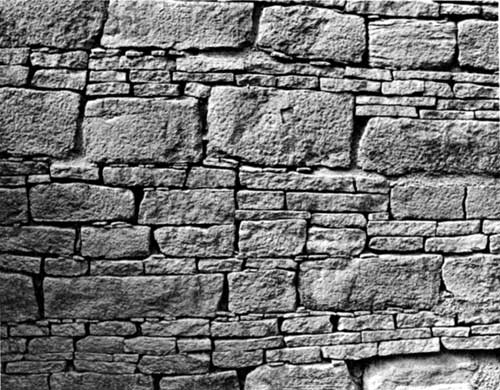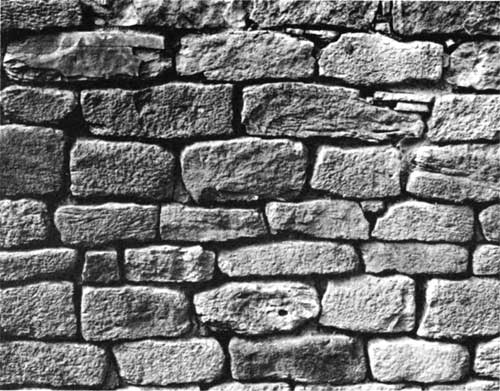|
AZTEC RUINS National Monument |
 |

Chaco-style pottery pitcher.
Diameter at mouth,
2-1/2"; Maximum diameter, 4"; Height, 6-1/4".
Man in the San Juan Valley
THE AZTEC PUEBLO. At the beginning of the Great Pueblo Period in the Animas Valley there may well have been a sizeable population living in scattered unit house dwellings and small villages, built largely of river cobbles and adobe mud. The area to the south of Aztec, in and around Chaco Canyon, and that to the northwest, in and around Mesa Verde, had each developed local variations in architectural style, religious concepts, and minor arts and crafts. Cultural influences from these two areas were to have a marked effect upon the large pueblo at Aztec that was built, abandoned, and reoccupied during this period.
The Chaco Wash (today a dry streambed during much of the year) rises in the high plains north of the Chacra Mesa, extends westward for 68 miles, and then twists sharply to the north to join the San Juan just above Shiprock, N. Mex. For about 20 miles it flows westward through a beautiful yellowish-brown sandstone canyon, the cliffs of which step back in a series of gigantic sandstone ledges. In places the canyon bottom is broad and level, but today it is scarred by a deep arroyo with branches which extend up each little side canyon, so that travel on foot across or up and down the canyon is difficult. A thousand years ago this arroyo did not exist, and the Chaco Wash was a shallow, clear-flowing year-round stream, meandering through a lush green valley. Where today the sandstone ledges stand starkly denuded of all trees, there was once a dense forest of pines and junipers. Along this canyon bottom and on the mesatops to the north and south, the prehistoric Chacoans erected some of the finest sandstone masonry pueblos in North America. A number of other large Chaco-like sites were built in places outside the canyon proper, and the influence of this building style was felt for 50 miles around.

Chaco-style masonry wall.

Mesa Verde-style masonry wall.
To the northwest of Aztec, between the La Plata Mountains and the Sleeping Ute, in and around the area dominated by the large tableland of Mesa Verde, a second regional culture center developed. These Indians lived along the main watercourses of the area—the McElmo and Montezuma—or dry-farmed the surrounding mesas. It was toward the end of this period that the Indians living in the Mesa Verde itself built their large imposing cliff dwellings.
By the end of the preceding Developmental Pueblo Period the communities in the San Juan area began to be more centralized and to be built according to preconceived plans. Such planning denotes a form of community control, or at least some kind of control over a fair-sized labor force. Today, community projects are frequently carried out in the pueblos by the majority of the people under the direction of their caciques, or leaders, after careful discussions and proper religious observances by the elders of the group. A similar form of self-government must have existed in the prehistoric pueblos. It was probably based on a time-honored tradition given sanction by religious beliefs which extended back as far as the late Basketmaker period where there were beginnings of large community kivas and centralized religious group activities.
With large groups of people living together, greater cooperation was mandatory, and through such cooperation the necessary tasks were accomplished more quickly. Thus there was greater leisure for many people which could be devoted to the more interesting arts and crafts. Sometimes societies limit this greater freedom and leisure to a ruling class, but such does not seem to have been the case among the Pueblos. There are some indications, however, that especially in this period there may have been developing the concept of a priestly hierarchy that also exercised civil controls.

|

|
|
Last Modified: Sat, Jan 13 2001 10:00:00 am PDT |


